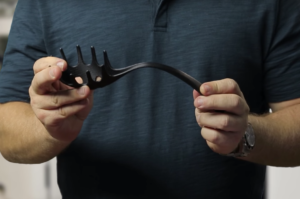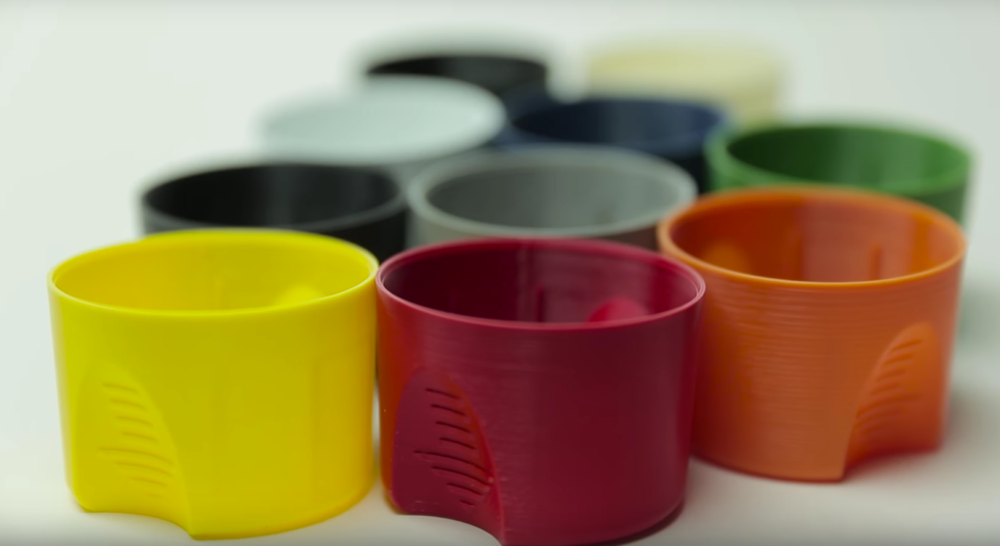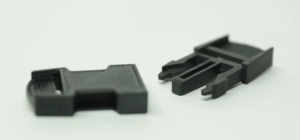 While metal 3D printing technology is becoming more commonly used in a wide range of industrial applications, it is still a very small segment of the professional 3D printer market. Currently, about 75% of all new 3D printers sold are FDM printers, and quite a few of them are used in business environments. Stratasys’ own Fortus family of commercial FDM 3D printers are among the world’s top selling printers, many of them used in high-production facilities through industries as diverse as consumer products, automotive, aerospace and even medical applications. Stratasys also offers some of the more advanced FDM 3D printing materials on the market, many of them with incredible end-use applications.
While metal 3D printing technology is becoming more commonly used in a wide range of industrial applications, it is still a very small segment of the professional 3D printer market. Currently, about 75% of all new 3D printers sold are FDM printers, and quite a few of them are used in business environments. Stratasys’ own Fortus family of commercial FDM 3D printers are among the world’s top selling printers, many of them used in high-production facilities through industries as diverse as consumer products, automotive, aerospace and even medical applications. Stratasys also offers some of the more advanced FDM 3D printing materials on the market, many of them with incredible end-use applications.
Unfortunately there is more to 3D printing than just pressing a button and waiting for your finished part to be ready. Not only does printability need to be considered during the design phase, but once a 3D model is ready to be printed a technician needs to carefully orient the model on the build plate in order to maximize the quality of the materials, ensure a quality surface finish and reduce or eliminate the amount of supports that will need to be removed. Unfortunately many 3D printing materials are very different from each other and will react in different ways depending on how they are used.
While the only real way to understand the best way to use a 3D printer and a specific 3D printing material is to practice, experiment and be ready to start over more than once, that doesn’t mean that there aren’t available resources to help new and experienced 3D printers alike make sure that they’re using their 3D printing material in the optimal way. In fact Stratasys itself has begun offering video guides from its Materials Business Unit full of tips and tricks to getting the best possible 3D print no matter which material is being used.
The latest video specifically focuses on the many FDM 3D printing materials offered by Stratasys. It covers the typical applications of each material and includes 6 tips for making sure that the correct material is being used for the correct job. It also covers which materials should be used to make everything from sterilizable medical equipment to end-use products, prototypes and finished industrial parts. In fact, Stratasys has plenty of material options for just about any 3D printing job imaginable.
The first material covered in the video is ABS-M30, a general purpose plastic that can be used to make everything from high-quality prototypes and concept models to fixtures and tooling. The video moves on to ASA, which offers mechanical strength, UV stability, and a smoother surface finish in ten different colors. Nylon 12 is a strong and semi-flexible engineering-grade plastic with a high chemical resistance, that can be used to print jigs and snap together parts and tools. The video ends on a few tips for using the high-end, high performance plastic ULTEM 9085 and ULTEM 1010 3D printing materials.
The video also mentions the new Fortus 900mc Acceleration Kit with a T40A printing tip. The kit and its advanced tip allows the Fortus 3D printer to produce parts up to three times faster than before. That amount of increased speed is virtually invaluable when using a large-scale 3D printer to manufacture very large parts. Especially if there is a project with a very tight production window. The video also mentions how self-supporting angles can be used on large-scale printers to eliminate the need for removable supports, which can be helpful when producing objects using one of the two available ULTEM materials.
You can watch the entire video here. Would this be helpful for you? Discuss over in the 3D Printing Video Guides from Stratasys forum at 3DPB.com.
Subscribe to Our Email Newsletter
Stay up-to-date on all the latest news from the 3D printing industry and receive information and offers from third party vendors.
You May Also Like
Precision at the Microscale: UK Researchers Advance Medical Devices with BMF’s 3D Printing Tech
University of Nottingham researchers are using Boston Micro Fabrication‘s (BMF) 3D printing technology to develop medical devices that improve compatibility with human tissue. Funded by a UK grant, this project...
GaeaStar and Verve Coffee Roasters Start Pilot Production of Sustainable 3D Printed Coffee Cups
Following a 2022 debut in Germany, GaeaStar, a startup based in San Francisco and Berlin, has begun US pilot production of its sustainable, disposable clay cups and bowls made with...
Meltio and Accufacture Unveil Robotic Metal 3D Printer Made in the US
Meltio has partnered with Michigan-based robotics firm Accufacture to introduce Alchemist 1, a robotic cell designed for wire-laser metal 3D printing made in the US. This new system represents a...
WASP Highlights Advances in Healthcare 3D Printing at Italy’s Exposanità 2024
WASP takes center stage at Italy’s leading healthcare expo, Exposanità 2024, demonstrating the transformative impact of its advanced 3D printing technologies on the medical sector. Known for its line of...



































